Trip to Joggins Fossil Cliff - Nova Scotia
During my completely undeserved vacation this summer I decided to make a quick detour on the way back home. This detour took me to Nova Scotia, a place I long had the desire to visit. Unfortunately two days are not a lot and therefore I had to squeeze in as much scenery as possible.
But the things you can see there are just amazing. The first stop I took was at Joggins fossil cliff.
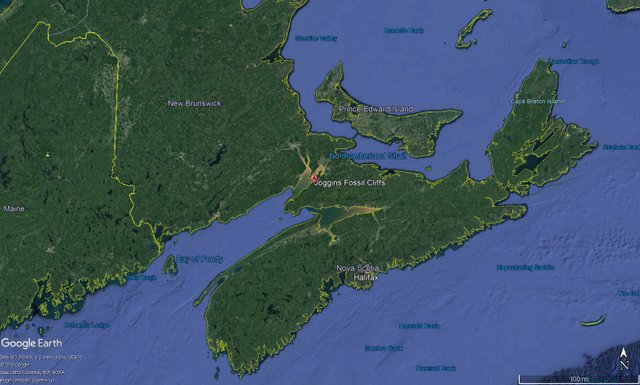 Map showing the location of the Joggins fossil ciff
Map showing the location of the Joggins fossil ciff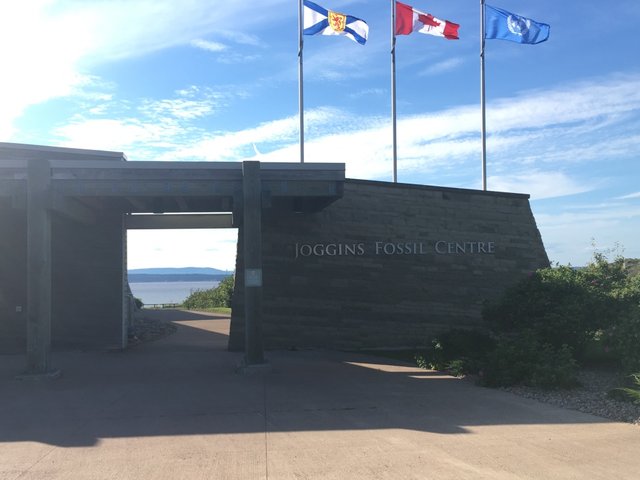 Entry to the Joggins Fossil Centre and access to the cliff
Entry to the Joggins Fossil Centre and access to the cliffIt is a roughly 15 km long and over 30 m high cliff along the coastline of the Bay of Fundy. The tides at the Bay of Fundy are the highest in the world and tear pieces off the walls of the cliff twice a day and is a UNESCO World Heritage Site.
The layers composing the cliff are 310 million years old and date back to the Carboniferous Period. They host an almost unreal amount of fossilized wonders.
The fossil record at Joggins contains 195 species (and counting), offering the most comprehensive sampling of terrestrial life (life on land) in the Pennsylvanian Coal Age. This record includes the plant life which became the vast coal deposits for which this period of Earth's history is named, as well as invertebrate and vertebrate fauna from both the aquatic and terrestrial realm, all preserved within their ecological context.
jogginsfossilcliffs.net

Beginning of the cliff
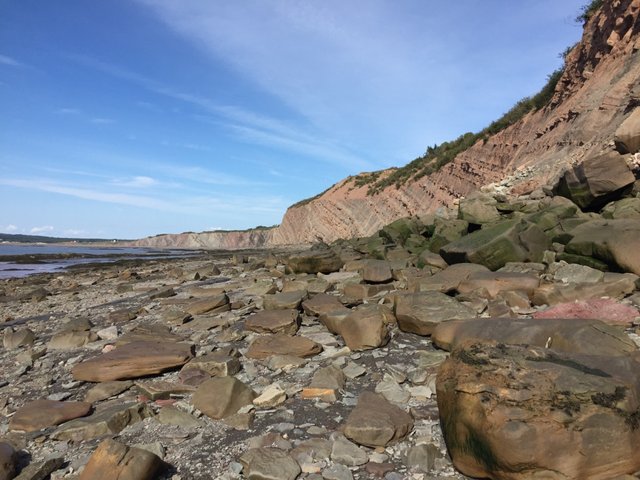
As far as I made it along the cliff that day. Just around the end of the upper picture
Unfortunately I was only able to spend a couple of hours at the beach. I did not even manage to walk the full length of the cliff. But I was already amazed by the pieces I found. I was hoping to see a fern or some tetrapod footprints but unfortunately I did not get that lucky. Tetrapod remnants are probably the most amazing find at Joggins. These include footprints and droppings, but also full on amphibian and reptile fossils. Inside a fossilized tree trunk the oldest reptile (Hylonomous lyelli) has been found. It is not sure if they went into the trunks to find shelter and got stuck or if these early reptiles built their nests in hollowed out trees.
The first thing you involuntarily find is coal. Coal layers, coal pieces and washed out coal fragments forming layers of sand. No wonder coal mining was big at Joggins up until the mid 1900’s.
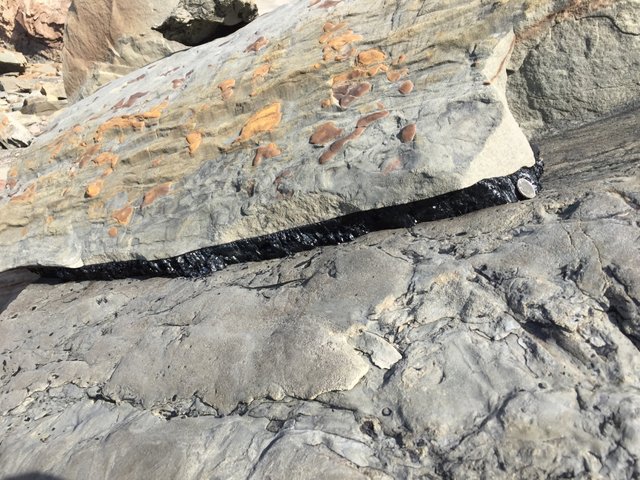
Coal Layer in the stratigraphy
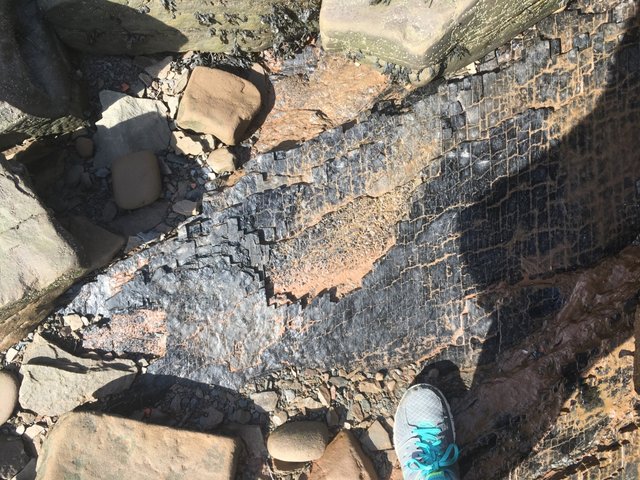
Top view of a coal layer
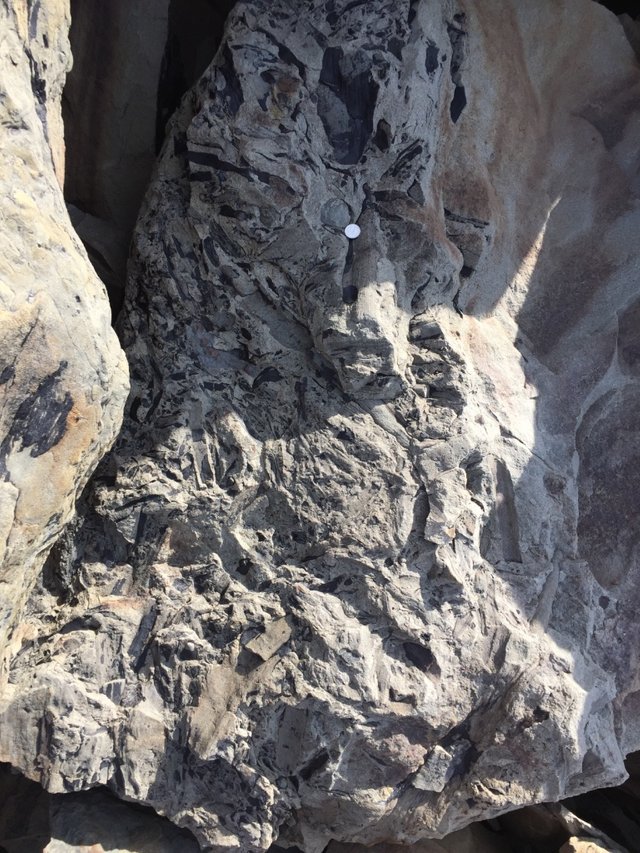
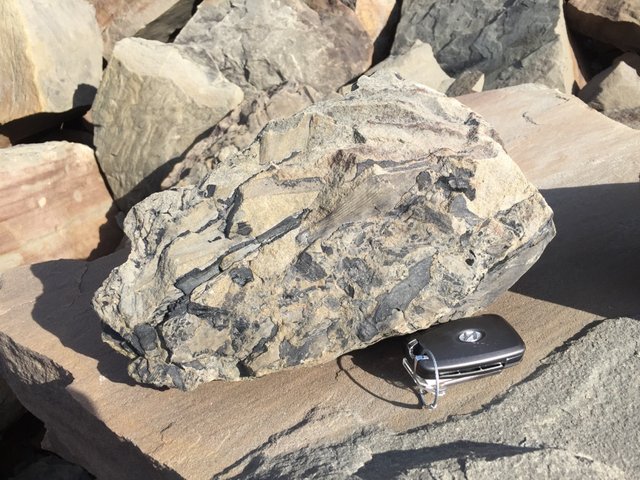
Lots and lots of plant fragments that have been turned to coal
And after walking a little further I managed to find some cool trees.
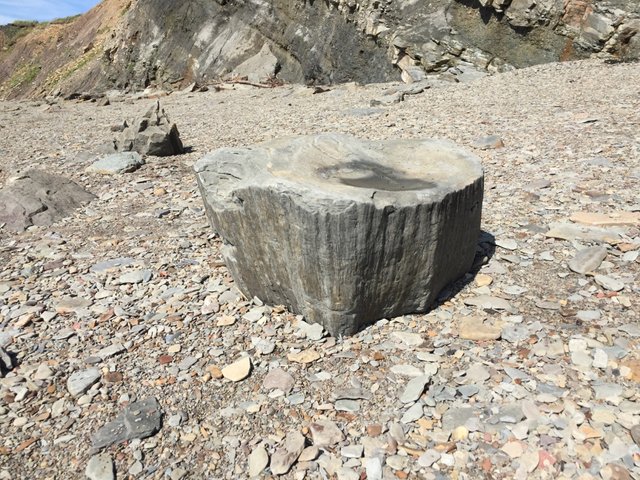
Part of a trunk
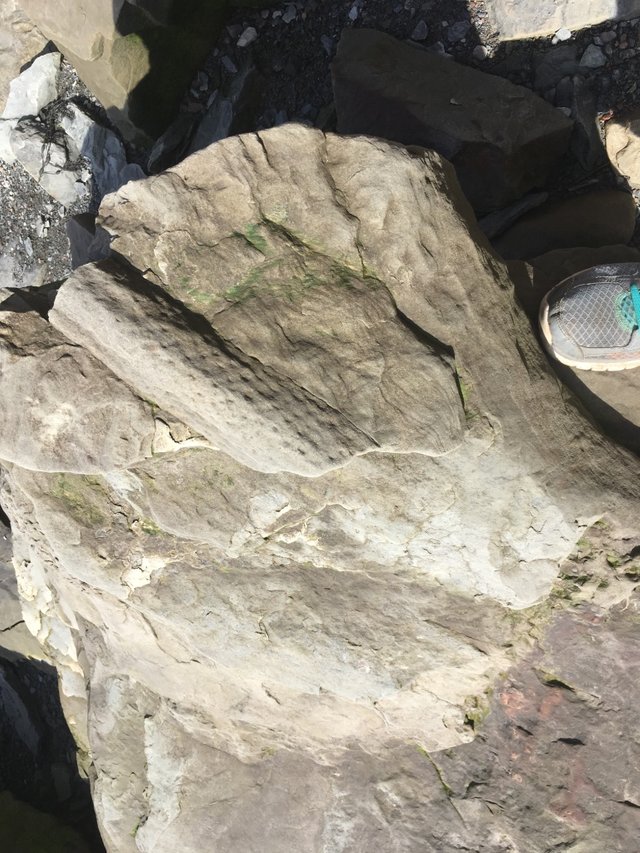
Piece of a root
Awesome post! The photos, pardon the pun, rock!
Keep on writing and stay curious!